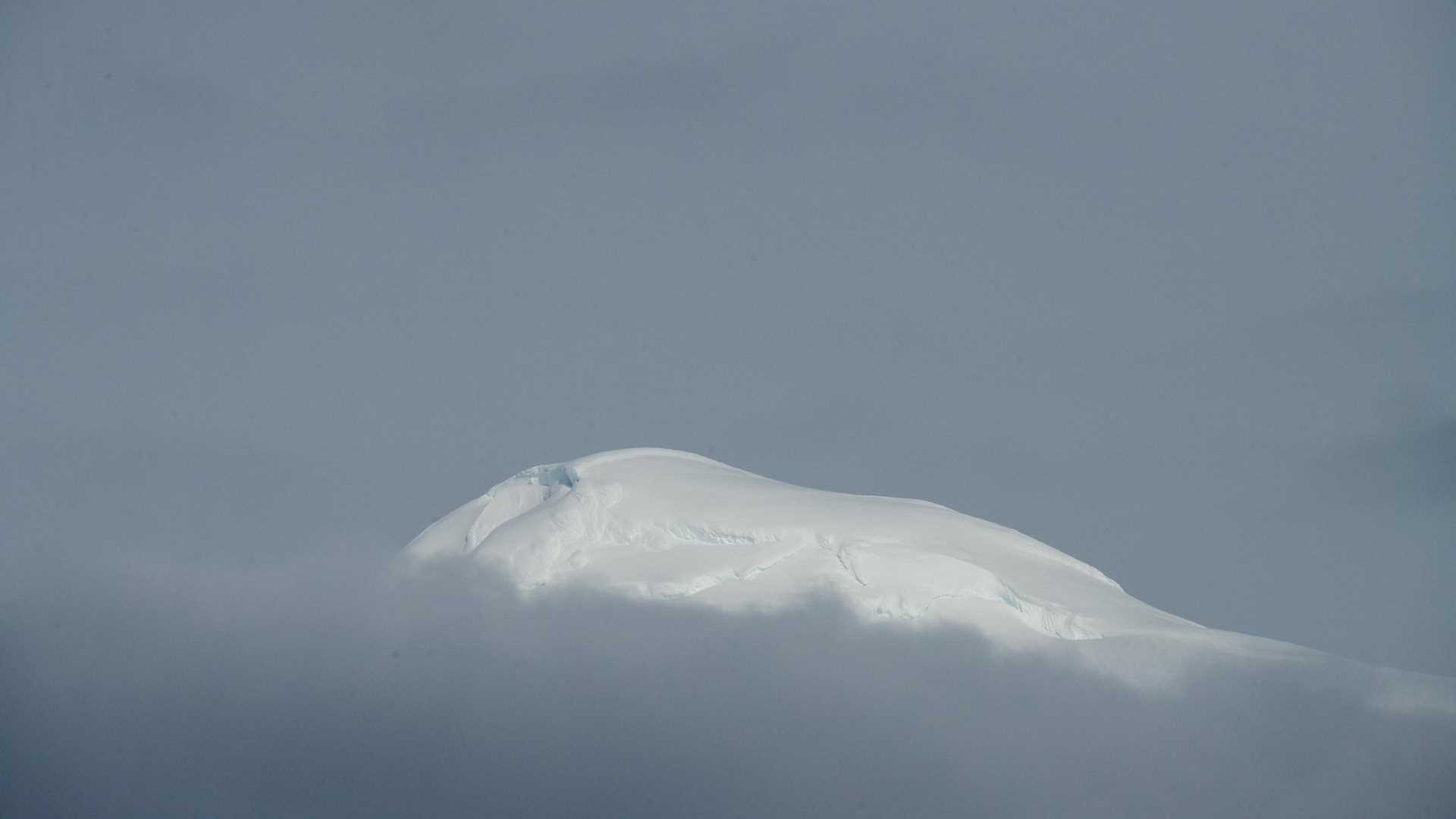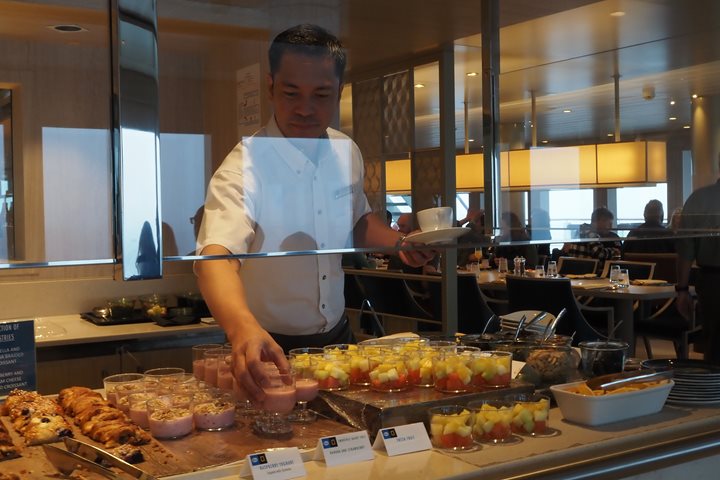The early morning hours saw us sailing through the northern Gerlache Strait, under calm sea conditions and gray skies. The odd feeding humpback whale was sighted as we made progress for our intended morning destination.
After breakfast, we enjoyed beautiful conditions for a Zodiac cruise of Hydrurga Rocks. Named after the leopard seal, the rocks were occupied by chinstrap penguins and Antarctic cormorants. The chinstrap penguins were incubating eggs and we saw a few young chicks. The waters around the rocks had much penguin traffic going to and from their feeding grounds. Pink guano around the small colonies was a telltale sign that they were feeding on krill.
Being good divers, the cormorants build nests with algal materials, which they mix with guano to build pedestal-type nests. Most of the birds were already with large chicks, all covered in their smoky chocolate down. As the parents arrived from their foraging trips, they would enthusiastically shake their heads and necks in anticipation of some nourishment.
The coastline was occupied by good numbers of snowy sheathbills busily feeding on the intertidal zone. The lower sections of the rocks still had still patches of snow and ice, where a good number of Weddell seals lounged about. Some were large and very well insulated with a generous layer of blubber. The sun came out on occasion to illuminate the many different shaped icebergs around the rocks. The ice fascinated us, and we tried many ways to try and capture the essence of these floating sculptures.
For the rest of the day, we slowly sailed south mostly through the Gerlache Strait, meeting other expedition ships along the way. Many humpback whales were going about their summer feeding. We came upon a larger concentration of 7 individuals close to each other and over the next while, we were all treated to fabulous close encounters as they swam close by, often showing their flukes. A mother and small calf came right past the bow of the ship and proceeded along the length of the ship. The clear waters allowed us to see every inch of their bodies, including their long pectoral flippers.
We then sailed into the narrow 16 nautical mile Neumayer Channel, under sunshine, which beautifully lit up the surrounding glaciers and mountains. After dinner we headed back up on deck to find ourselves in the Bismark Strait near the mouth of the Lemaire Channel. Off on our portside, the impressive Una Peaks with their snow-covered tips were lit up under the evening light. The ship then proceeded to sail through the narrow channel, one of the iconic places in the peninsula, with the mainland on our port and on our starboard side, Booth Island. It was on this island that the great French explorer, Jean Baptiste Charcot, overwintered during his first expedition.
After the traverse of the Lemaire Channel, we entered the Penola Strait. By this stage, our senses were so exhausted after witnessing so much, we headed for bed as the ship slowly made her way further south and to new adventures. But those would have to wait until tomorrow.







